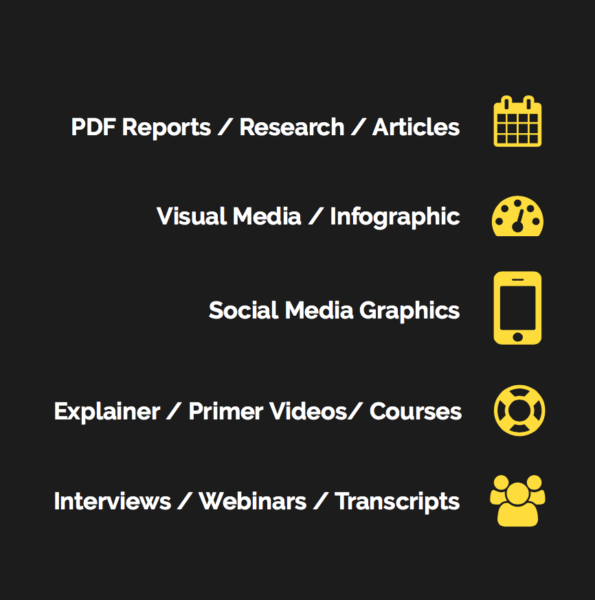In today’s world you can no longer simply build it and expect that your audience will come. There’s too much clutter.
Too many ads.
Too many websites.
Too many offers.
Too many . . . everything.
IS THIS YOU?
Here’s the hard truth of today: You cannot just publish something to your church’s website or blog and then expect a traffic stampede to come discover it.
OK, so you posted a link to your Facebook Page, that would do the trick, right?. . . . and wait! You even Tweeted it. SO why isn’t everyone sharing it?
Perhaps it was that specific piece, right? Ok, so next time you try a different approach and publish another piece of content for the next event, sermon series, or church news.
CRICKETS.
Are you frustrated just waiting and waiting and waiting for the crowd to bust down the door?
Are you ready to call it quits? Are you ready to accuse social media of being an imaginary oasis in the land of church communications?
REPURPOSING + SYNDICATION = CONTENT MARKETING MAGIC
Content syndication is critical in getting the maximum value out of any piece of content you published. Without it, your content and really your church or organization will get lost.
One of the key factors in publishing is the magic word “repurposing” — taking what you’ve made and remixing it in different ways so that you can share it in different places. The end results is a proliferation of content that you have available to publish across the web and get in front of your audience — which is splintered into different web properties that server different sub-audiences.
You job doesn't end with producing the piece of content. It has just begun. Share on XTHIS IS WHAT I MEAN BY REPURPOSING & SYNDICATING
Here’s an example of the type of proliferation of content I’m talking about that’s based on a single original piece:
We’ll produce a video interview with someone that will then go through our content repurposing machine to create this work flow:
- We record a video interview using Skype or Zoom that produces a side-by-side video like the ones you see on CNN or cable network news shows.
- The video goes to the editor who puts on tops and tails, intro and outdo video clips with branding.
- Next, the final video goes up on YouTube and/or Vimeo
- We get the video transcribed by a team member (or you can use services like Rev.com to quickly get it done)
- Video gets embedded in post on our website with the transcript.
- Many times we’ll add the transcript to the YouTube description because if you add time-codes to various parts of the transcript, YouTube automatically links to that portion of the video so people can click and jump to that segment. Plus it’s good for SEO.
- We go back to the finished video and the audio gets exported as mp3.
- Both video/audio gets scheduled for publishing on podcast
- Transcript of the interview gets turned into PDF for lead magnet enticing people to opt-in to email list
- Next you’ll take pull quotes from the interview – sound bites – and create social graphics to be scheduled on each of the social media platforms, pointing back to our site’s page with the video embedded.
- If there’s an appropriate email list, this is a great item to feature to get in front of the list audience.
- Many times, there’s a series of other video interviews that might make sense to pull together. In that case, you can create a mini-email-based course / tour of that topic with the videos. So that means setting up a landing page to capture emails and programming an email sequence that sends out a series of automated emails featuring one piece of content in each email.
- etc.
- etc.
You job doesn’t end with producing the piece of content. It has just begun.
WHY GO THROUGH ALL THIS EXTRA WORK?
WHY do we need to do all this you ask? Because each of those versions will let people discover your content where they already are. There are two specific outcomes with this if you do it well:
- People will engage with your brand and content more than if you just posted it once on your blog without anything bringing people into your site
- As people find your content hopefully you have presented it in a way that will point people back to your home base (read: traffic)
We have 5 core ingredients in our content repurposing mix that are easily used for multi- channel publishing. Ideally target audiences experience repeated exposure and varied presentation over time because you’re sharing the core messaging in various forms over time with them.

REMIXING FOR TRAFFIC
One great approach to repurposing that will help drive traffic back to your site is to produce the remixed content in a way that offers only a portion of the entire piece. That way, you can always end with a call to action for people to visit your site to get the rest. This works great with interview excerpts, or resources organized as lists, summaries of longer pieces, etc.
ONE LAST BENEFIT
One of the best parts about pursuing content repurposing is that the result will be a content bank with a family of pieces for which your church is establishing trust & authority. This library of content can now be re-used over time to reinforce your messaging and present a consistent unified brand to your audiences.


Recent Comments